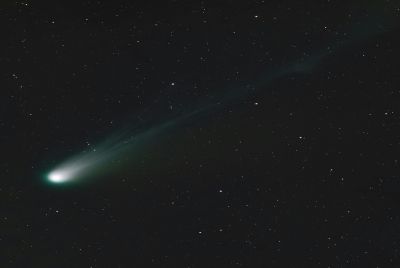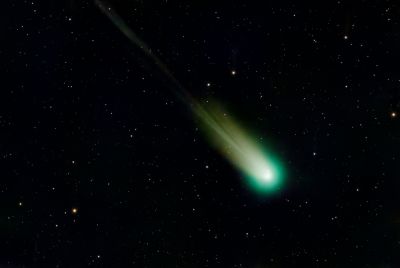3I/ATLAS 'Not Firing Jets' But Holds 'Exotic Chemistry,' Astronomer Claims

The mysterious interstellar visitor 3I/ATLAS—also catalogued as C/2025 N1—is captivating scientists after Harvard astrophysicist Avi Loeb claimed the object shows no conventional cometary jets, sparking debate over whether it is truly of natural origin.
Astronomers worldwide are monitoring its movement and chemical signature, which appear unusually complex, yet the mainstream view remains that the object is a naturally formed comet from another star system.
No Conventional Jets, says Harvard Astronomer
In a recent analysis, Harvard astrophysicist Avi Loeb stated that 3I/ATLAS exhibits a 'jet path ... not away from the Sun like comets,' and that its apparent acceleration and other anomalies warrant scrutiny.
He pointed out that recent images do not display a classical comet tail pointing antisunward, remarking that 'for a typical comet, we should have seen a massive cloud of gas...'
'If 3I/ATLAS fails to produce a cometary tail, it is likely not a naturally occurring comet,' Loeb added.
He further told The Economic Times that multiple jets and structures, some of which appear sunward-pointing, could, in principle, be consistent with an artificial probe or an engineered object of unknown design.
'Exotic Chemistry' Reinforces the Intrigue
Infrared spectroscopy using the James Webb Space Telescope has revealed that 3I/ATLAS contains an unusually high carbon-dioxide-to-water ratio--roughly 8:1--one of the highest ever recorded in a comet, according to data posted on arXiv.
Another preprint suggests that cosmic-ray irradiation may have chemically altered the comet's outer layers, leaving behind a distinctive molecular signature.
Astronomers writing for ScienceAlert stated that the object's composition suggests it formed in a low-metallicity, radiation-rich region beyond our solar system and spent millions of years travelling through interstellar space before being captured by the Sun's gravity.
Why the 'Not Firing Jets' Claim Matters
Loeb argues that if 3I/ATLAS were behaving like an ordinary comet, it would eject substantial gas and dust, forming visible jets and a tail pushed away from the Sun.
The apparent absence of such features, he contends, leaves open the possibility that the object is 'not a comet as we know it.'
However, several independent observations show sun-facing jets in some images, which comet specialists describe as a normal reaction to solar heating.
A report in Live Science notes that jets 'pointing toward the Sun' can occur when sublimation happens beneath the surface, creating venting patterns that briefly appear to be directed sunward.
Mainstream View Leans Toward a Natural Origin
While Loeb continues to highlight 3I/ATLAS's anomalies, most astronomers reject the notion of alien technology.
British astrophysicist Brian Cox has called such speculation 'drivel,' saying the object is 'entirely natural in origin ... a visitor from elsewhere in the galaxy.'
An analysis cited by ScienceAlert likewise concludes that 3I/ATLAS's coma and tail fit the typical profile of cometary activity, and that its distinctive chemistry could reflect its birth around another star.
What Scientists Will Watch Next
Researchers worldwide plan to continue tracking 3I/ATLAS as it exits the inner solar system to monitor how its outgassing, velocity, and chemical profile change with distance from the Sun.
Loeb said it would be 'easy to test whether 3I/ATLAS is natural or technological by measuring the outflow velocity, mass flux and composition of its jets during the coming month.'
NASA, meanwhile, has clarified that the object poses no threat to Earth and instead offers a rare chance to study pristine material from another star system.
A Cosmic Traveller's Long Journey
For many observers, 3I/ATLAS is more than a scientific anomaly--it's a messenger from the broader galaxy.
The interstellar body may have been ejected from its home system billions of years ago and drifted through space before being drawn briefly into our cosmic neighbourhood.
As one researcher described it to Chron, 'It's like glimpsing a rifle bullet for a thousandth of a second — you can't really tell where it started.'
While speculation continues, the consensus among scientists is clear: 3I/ATLAS is a rare and valuable opportunity to explore the diversity of objects roaming between the stars — a reminder of how much of the universe remains unexplored.
© Copyright IBTimes 2025. All rights reserved.




















